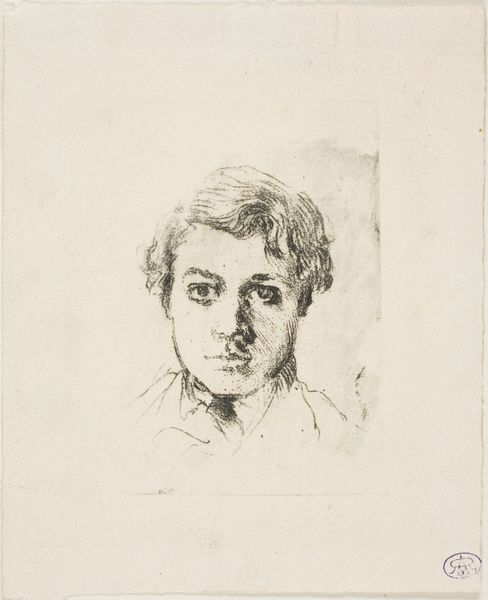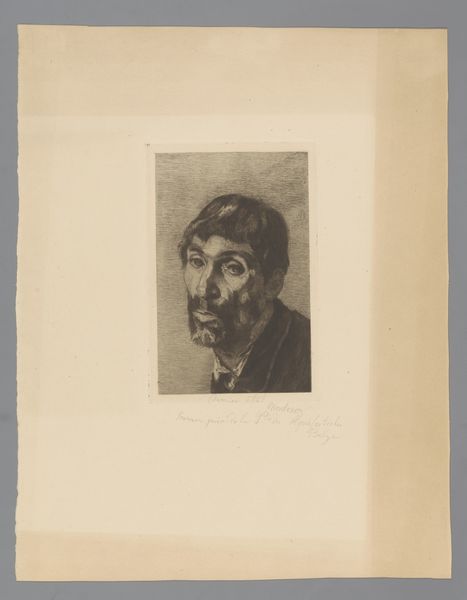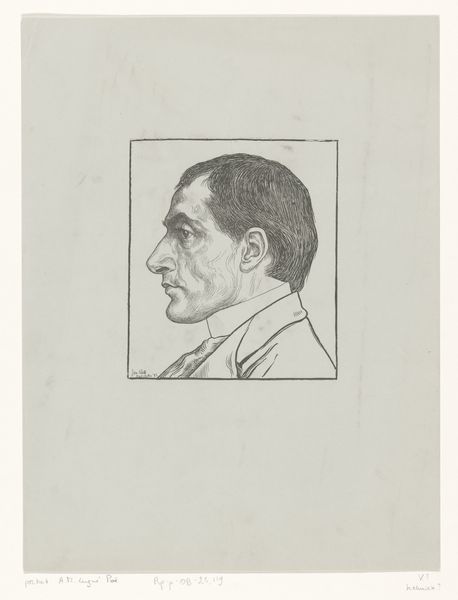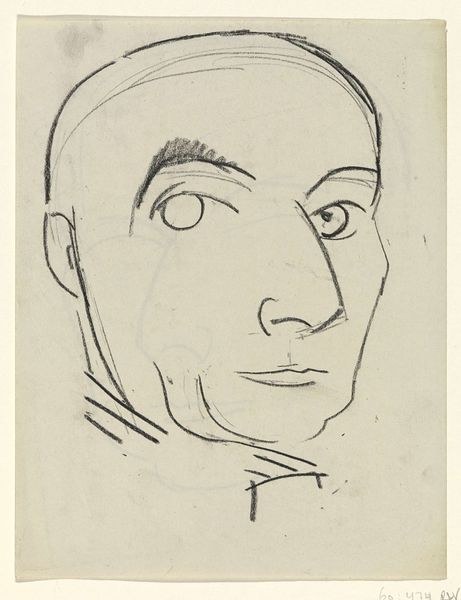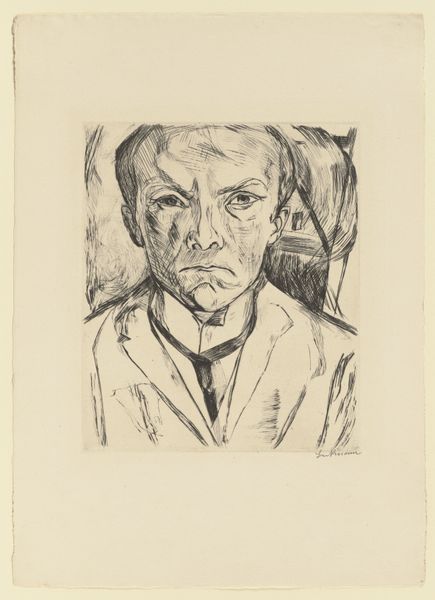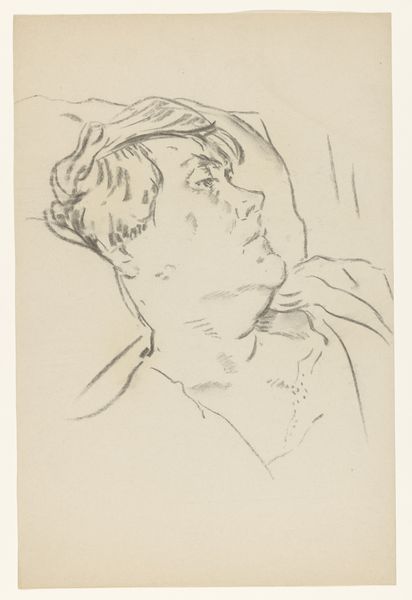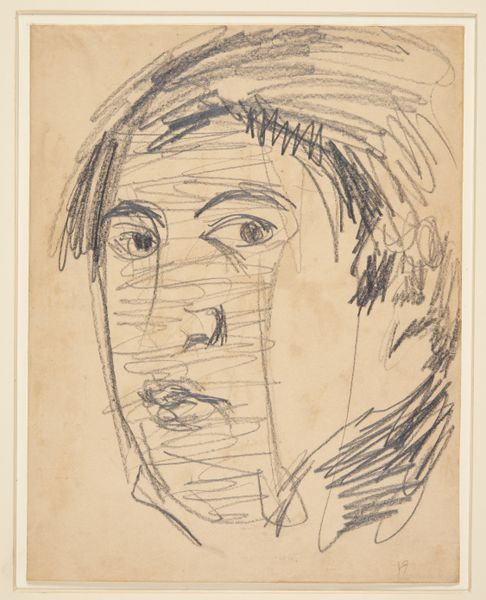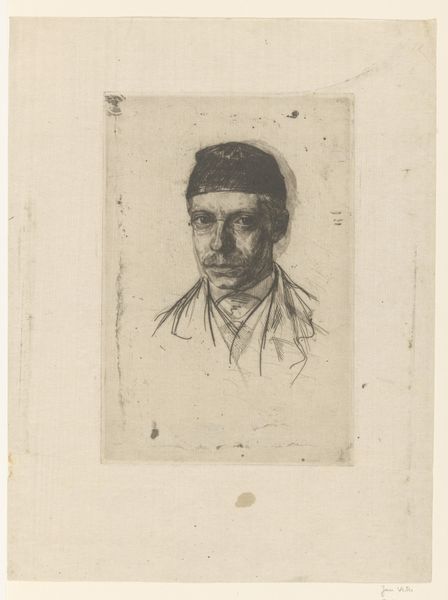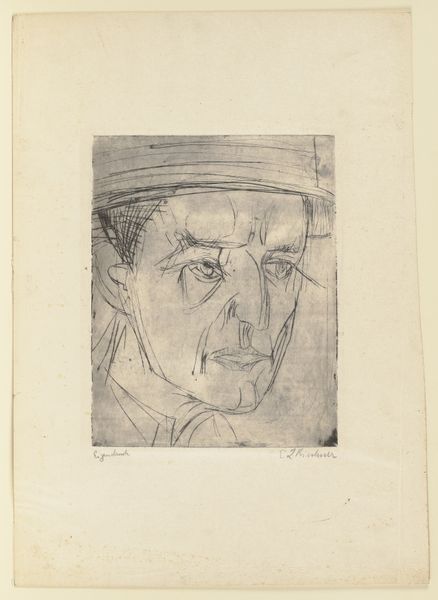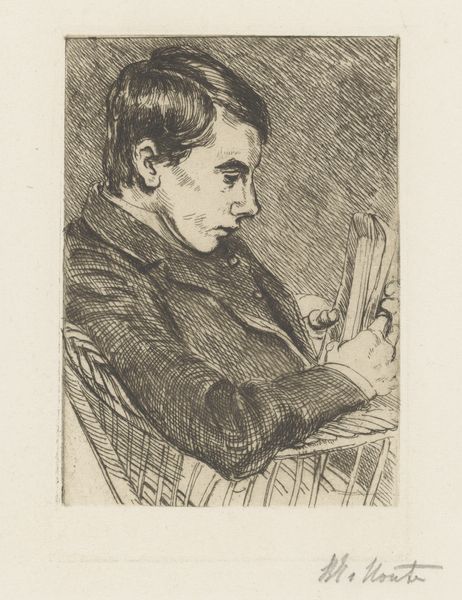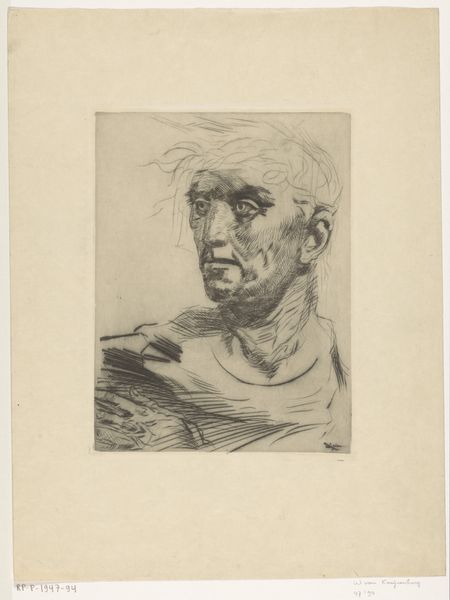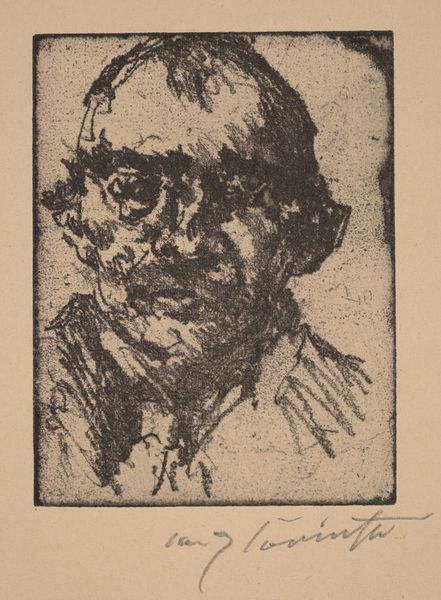
drawing, print, etching
#
portrait
#
17_20th-century
#
drawing
# print
#
etching
#
caricature
#
caricature
#
german-expressionism
#
german
#
expressionism
#
portrait drawing
Copyright: Public Domain
Curator: Here we have Max Beckmann’s "Portrait of J. B. Neumann," created in 1919. It’s an etching, showcasing Beckmann's distinctive style of portraiture. Editor: My initial reaction is…unsettling. There’s something deeply unnerving about his gaze. The distorted features, those piercing eyes—it's hard to look away. Curator: That’s characteristic of German Expressionism. Beckmann, while resisting direct categorization, participated in that post-war environment. There was intense disillusionment that he channels through exaggerated forms, almost to the point of caricature, to express the inner turmoil. Neumann, here, was a gallerist instrumental in promoting Expressionist art. Editor: Knowing that he championed Expressionism definitely adds a layer. Is Beckmann mocking him, celebrating him, or maybe something in between? There’s such ambiguity in this portrayal; it refuses to be simple admiration. It reflects the complexity within the artistic circles and power dynamics that often get sanitized in conventional art history. Curator: Exactly! Beckmann had complex relationships with art dealers. Patronage was everything. He had an awareness of the power dynamics involved in creating, showing, and selling art. Here, Beckmann uses the very tools of the avant-garde against one of its proponents. It's fascinating and highlights how institutions often absorb and then neutralize radical gestures. Editor: The stark contrasts created by the etching process add to this feeling of unease and heightened tension. It strips away any gentility or softness, it pushes us to confront the subject, forcing uncomfortable recognition, challenging the status quo. Was the intention to question the role of the art dealer, the market around the art, maybe even their place in that tumultuous post-war era? Curator: Precisely. These images became very significant given the suppression of modern art during the Nazi era, which occurred not long after this portrait. Now it represents more than the alliance of an artist and dealer. Now we examine the political forces that nearly destroyed an entire culture of art. Editor: It also makes you think about what role we are playing today, looking and interpreting art after the cultural wreckage that Nazi suppression generated. Curator: It reminds us of how art echoes and questions power. Editor: Indeed. It lingers and forces us to reconsider.
Comments
No comments
Be the first to comment and join the conversation on the ultimate creative platform.
